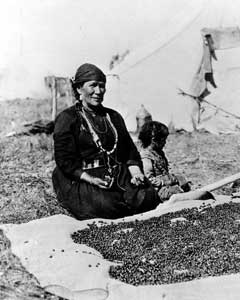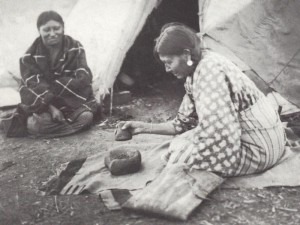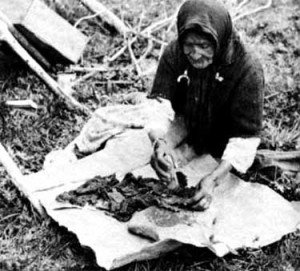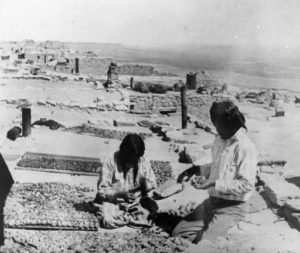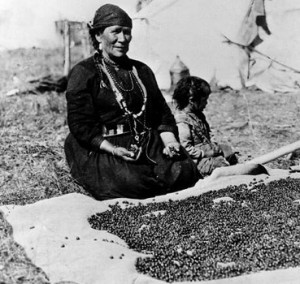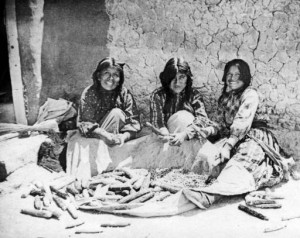A good vegetable harvest was important for many tribes, but all Native Americans did not practice agriculture and reap harvests at the end of a growing season. These tribes still had to provide for winter food, when game was more scarce. Drying food was still an important method of preservation, with dried meat and fish providing quality protein sources when hunting became difficult.
One nutrient-rich dish Native Americans created was pemmican. Rich in protein and fat, pemmican was both filling and calorie and nutrient dense. It was portable and long lasting–an ideal ration for scouts, hunters, and others who needed to be away from camp for any length of time. Various recipes existed, based on what was available, but a basic recipe used extremely lean meat, dried fruit without pits, rendered fat, nuts, and perhaps a touch of honey. The meat was dried until it was nearly crispy, after which it was ground or pounded into a powder. The dried fruit (also ground) would be added, and then the liquid fat. The ingredients would be mixed by hand along with any nuts or seeds desired, and then allowed to cool. Pemmican could be rolled out into thin strips or made into small wafers or balls that were easy to eat as snacks. This mixture–prepared properly–could last for years, especially if a little salt was added.
______________________________________________________________________________________
